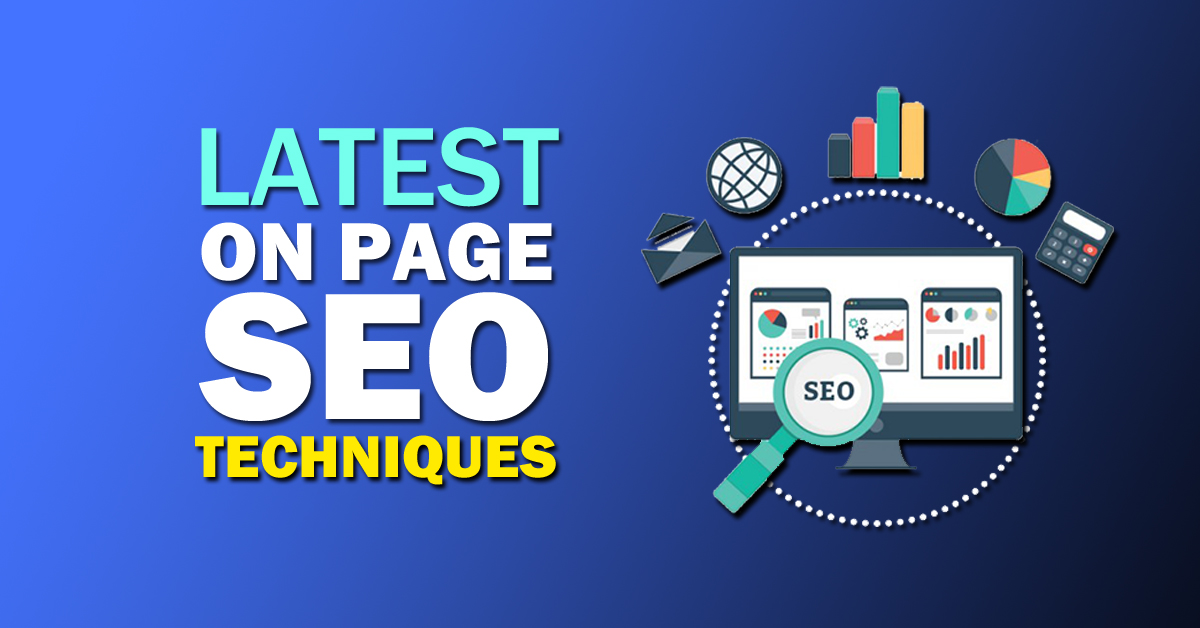
Search engine optimization (SEO) is not only important for driving organic traffic to your site, but also for improving the website’s conversion rates. It’s highly important to keep track of your conversion rates and understand what you can do to improve them.
Improving your on-page conversion rates also means trying to maximize the value of your traffic and getting new visitors to your website. B2C sites convert from SEO on average at 1.3% and B2B sites convert at around 1.85%.
However, let’s not wait any further because in this article, we will dive deeper and learn more about on-page SEO strategies we can use for increasing conversion rates.
11 On-page SEO strategies to follow for increasing your conversion rates

1. Identify your audience’s needs and wants
Before you dive deeper into your SEO strategies, identify what your audience wants and needs. Never try to manipulate your customers into buying something they think they might need, but don’t actually need it. Initially, you need to first understand what they want and need, after, you make offers for coping with their preferences.
In order to understand your audience’s needs or wants, you can either create a buyer persona, or try to learn more from them on social media. Always remember that conversion rates are connected with SEO, but have to do a lot with a user’s psychology.
After you entirely understand what your target audience needs, you can use that information for developing your site’s elements, such as the prices, images, content, design and more. It’s important the website fits in line with the user’s preferences.
2. Use the right skills and assessment platform
If you want your on-page optimization to be top-notch, you need to also hire the right developers that have a good understanding of the page’s SEO. A popular choice amongst many hiring managers is TestDome. The platform is focused on assessing the abilities and skills of a developer.
While it’s a popular choice, many run into some issues when using this platform and the most common ones include:
- Lack of video interviewing features
- No anti-cheating features
- Isn’t mobile-friendly
- Doesn’t have any phone support team
Therefore, when they find this out, they’ll start looking for TestDome alternatives to fulfill their hiring needs and here are some of them we recommend you use:
- TestGorilla
- iMocha
- HackerRank
- eSkill
- DevSkiller
3. Set your conversion rate goals
If you keep thinking about how to increase your conversion rate, you need to ask yourself what kind of goals are you trying to achieve? However, what should you be focused on when you are trying to increase your conversion rate?
- To generate more leads
- To increase ad spend return
- To maximize sales during a promotional period
- To gather more customer insights on a deeper level
- To streamline your website navigation
After all, you can always hire an agency to help you out with this if you see it as time-consuming.
4. Use the power of social proof
Social proof is an excellent new way of showing newcomers more about your business. It’s the same story when you start liking something your friend or family member has. It’s an instinct that draws you to buy something new.
For marketers looking to increase conversion rates, it’s important to do the following:
- Drive a sense of urgency
- Validate the customer’s interests
- Highlight stock scarcity
5. SEO optimizes your content
A blog is the best thing you can have on your website. Additionally, let’s clarify that if your content isn’t good, no matter how good your SEO optimization is, it won’t matter. Blogs will usually convert readers to leads if the readers start to regularly read your blogs. Some SEO tips you can follow for optimizing your blog are:
- Include internal links
- Include high-authority external links
- Write high-quality content
- Do in-depth research
- Use H2s and H3s
High-quality content is what drives conversions and including SEO in it is what tops it off.
6. Conduct A/B testing
Most conversion rate changes are not only done through one thing. You always want to be sure to measure adjustments and differ from your competitors to see which element works best for you. Many might avoid A/B testing, but it’s not a good idea.
If you changed your product description, CTA, or anything else, A/B testing will let you know what kind of changes you need to make and which strategy fits your boat the most.
7. Reduce website load speed
A successful website that is optimized loads quickly. If it takes your website more than two seconds to load, many people will start to leave and might never come back for a visit. Loading speeds are important and they are one of the main reasons someone may get frustrated or have a bad user experience when it takes too long to load.
In order to optimize website loading speeds you can optimize images and other larger files that might slow your website down. Additionally, seek to minimize HTTP requests by reducing the number of elements each of your pages have and avoid unnecessary redirects.
You can try to also incorporate CDN (Content Delivery Networks) that reduce loading times and improve the user experience, increasing conversion rates on your website.
8. Include CTAs
A call-to-action (CTA) specifies all actions that you want your visitors to take. We have all heard that, but anyone can just include a CTA. However, who is the one who can actually gain people’s attention with it?
CTAs should be visible and with a clear color. Avoid adding too many CTAs and ones that are with dark colors. Furthermore, you can use CTAs on your text, image and banner.
9. Improve your user navigation
Poor website navigation can render content on your site and make users leave your site. If your online store isn’t easy to navigate, your conversion rate might not be as good as you think. To make your site much more user-friendly and improve conversion rates, try to create an excellent website experience that helps users easily find your products.
For example, you can do the following for them:
Search engine optimization (SEO) is not only important for driving organic traffic to your site, but also for improving the website’s conversion rates. It’s highly important to keep track of your conversion rates and understand what you can do to improve them.
10. Get rid of your broken links
It isn’t impossible to not have any broken links on your website. Whenever someone accidentally links to a URL on your site that doesn’t exist, they’ll need to have a place to land that is dedicated to getting them where they’ll need to go.
404 errors are common errors users will encounter. These errors are highly frustrating to encounter, especially when you do so on a generic error page.
Generic pages are mostly blank, giving them no other alternatives, but to close the window. This causes visitors to navigate away from your site and this will negatively impact your conversion rates.
404 pages are an excellent way of building up brand awareness. They are great for building great brand awareness and reinforcing your values and culture. Sometimes, even if your visitors do get a 404 error page, you can make it interesting by adding a menu to it and redirecting users to another page. This makes you look more professional and reduces the chances of them navigating away from your site.
11. Write strong copy
All the strategies above were good, but if you can’t write a good copy, your SEO optimization might not go so well. Good copy starts from the headline and if you manage to write powerful and persuasive words in your headline, your copy can grab lots of attention, persuade your visitors and have an emotional impact on your readers.
80% of readers will never make it past the headline. The best thing you can do to make your copy even more attractive to users is to also add numbers to your headline. For example, X reasons you should buy this product, X Ways you can start your own business, etc.
To write better copy, always think of what bothers your audience the most and try to write blogs that solve this problem. For example, if your audience wants to start their own business, make a blog about it and include a powerful headline to it as well. Make sure you clearly state what the content is about and make it persuasive enough that’ll lead your users to click on the blog.
A strong copy can be written when you exactly know what bothers your audience the most. After you clarify this, everything becomes easy.
The final cutdown
These are the ten on-page SEO strategies we think are best for you. Reduce loading page time, write good headlines, high-quality content, pay attention to the links you insert in your content and you should be all set.
While you may think there are secrets to follow for increasing conversion rates, the only secret to it is to solve a problem for your audience. Once they see that, they’ll come back to your content each time and see you as a problem solver.





